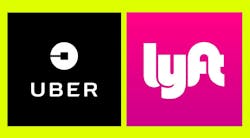Ride-Sharing Services May Save Cash But They Hurt the Environment
In the past, I’ve been a bit chagrined about my decision to drive a hybrid car and to stream TV and music and but I didn’t think I’d ever feel remorseful about using Uber or Lyft (I have both apps on my phone).
Thanks to ride-hailing services, folks can go out on Saturday night, have a couple of adult beverages, and not worry about getting arrested for DUI. It’s also both a convenience and money saver when going to the airport for more than a one- or two-day trip. Sounds great, right?
But hold on, a recent report by the Union of Concerned Scientists (UCS) found that a typical Uber/Lyft trip is more polluting than the same trip taken in one’s personal vehicle, since the ride-hailing vehicle has no passengers between trips. Additionally, the Uber/Lyft vehicle is actually increasing the number of car trips, since at least some of their passengers would otherwise be using public transportation.
Although the average ride-hailing vehicle tends to be newer and more fuel-efficient than the passenger’s personal car, those “deadhead” trips (no, not rides for Grateful Dead fans, but those times between trips when there are no passengers) result in higher emissions/trip, especially when the ride isn’t pooled. According to the report, these types of trips generate approximately 47 percent more emissions than the same trip in the passenger’s own car.
Pooled-trips and trips in electric vehicles (EV) will, obviously, result in lower emissions than the use of a personal car. According to the report: “An electric, non-pooled, ride-hailing trip can cut emissions by about 53 percent; an electric, pooled ride-hailing trip can cut emissions by about 68 percent compared with a private vehicle trip in the average car (or about 79 percent compared with a non-pooled ride-hailing trip)”.
Unfortunately, just because a rider requests a pooled trip doesn’t guarantee that other passengers will be matched for that trip. And, although the EV option seems like a no-brainer, less than one percent – based on mileage – of 2018 Uber/Lyft trips in California were in EVs.
ALSO...
Since ride-hailing is most prevalent in largely populated urban areas, the same locations that have more public transportation, biking, and pedestrian travel options, ride-hailing is frequently replacing those lower-emission alternatives. This also results in more traffic congestion, already a serious problem in many of those cities. So, the bottom line, according to UCS, is that ride-hailing trips are producing an average of 69 percent more carbon emissions than the trips they are replacing.
Fortunately for me, mass transit, bicycling, or walking are not options when I’m going to the airport…and my neighborhood Tiki Bar is only a couple of blocks away.
Last minute tip: If you do use Uber or Lyft, take disinfectant wipes along and use them on all touch points (door handles, seat belt latches, etc.) Can't be too careful, nowadays!
A regular contributor to HPAC Engineering and a member of its editorial advisory board, the author is a principal at Sustainable Performance Solutions LLC, a south Florida-based engineering firm focusing on energy and sustainability. He can be reached at [email protected].
About the Author
Larry Clark
A member of HPAC Engineering’s Editorial Advisory Board, Lawrence (Larry) Clark, QCxP, GGP, LEED AP+, is principal of Sustainable Performance Solutions LLC, a South Florida-based engineering firm focused on energy and sustainability consulting. He has more than two dozen published articles on HVAC- and energy-related topics to his credit and frequently lectures on green-building best practices, central-energy-plant optimization, and demand-controlled ventilation.
